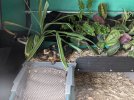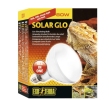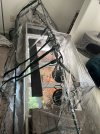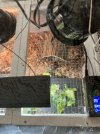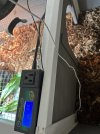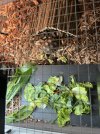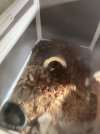Alex and the Redfoot
Well-Known Member
There is nothing really special about living plants  Use shallow pots and dense clumps, so tortoise see the plant as an obstacle and walk around (works with hostas, carex, boston ferns, coleus and spider plants). Shady plants with long stems or vines like pothos, "wandering jew", prayer plant, boston fern can be hanged from the ceiling or from the walls (I use kitchen railing on the wall and hanging pockets to keep pots on the wall, example photo attached).
Use shallow pots and dense clumps, so tortoise see the plant as an obstacle and walk around (works with hostas, carex, boston ferns, coleus and spider plants). Shady plants with long stems or vines like pothos, "wandering jew", prayer plant, boston fern can be hanged from the ceiling or from the walls (I use kitchen railing on the wall and hanging pockets to keep pots on the wall, example photo attached).
Any live plants need good ambient light (quality, "full-spectrum", non-colored grow lights) or to be swapped for "sun therapy" from time to time.
For watering it's better to use drippers otherwise you can get mold on the top soil layer. When preparing plant pots - try to avoid perlite or at least put a layer of clean soil on top. Eaten perlite is really dangerous for tortoises.
Any live plants need good ambient light (quality, "full-spectrum", non-colored grow lights) or to be swapped for "sun therapy" from time to time.
For watering it's better to use drippers otherwise you can get mold on the top soil layer. When preparing plant pots - try to avoid perlite or at least put a layer of clean soil on top. Eaten perlite is really dangerous for tortoises.
